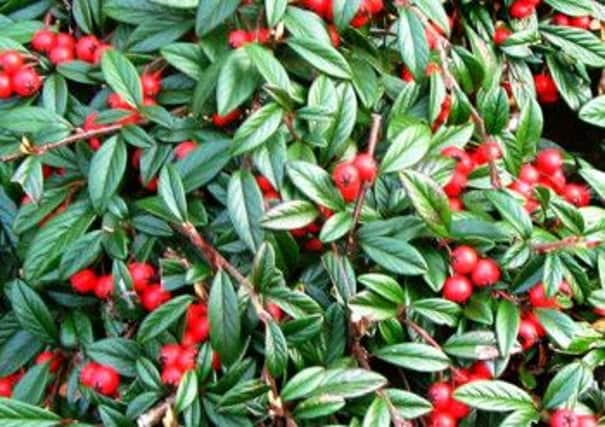Berried treasure


Gardeners should be proud to know that their berried treasures are likely to make the difference between life and death for many a bird. So, the healthier the tree or shrub, the more berries they produce and the more lives they save.
This year, rowans (aka mountain ash and sorbus) have been weighed down with fruit, and flocks of starlings, redwings and even waxwings have been going wild for the chance to feast before the fall.
Advertisement
Hide AdAdvertisement
Hide AdThe same applies, on a smaller scale, to cotoneasters, whose berries are beloved of blackbirds, which, even at this time of year, argue and posture with one another as to who has first feeding rights.
Thankfully, the birds tend to take their time stripping the fruit, so there’s also plenty of time for the gardener to enjoy the magnificent ruby red berries, set against a backdrop of dark, evergreen, glossy foliage that can brighten up the gloomiest November day or sparkle in the weak sunshine.
Cotoneaster is the gentler sister of another wonder of winter – pyracantha – and whereas the latter is gifted with vicious thorns, the former has none and so is often chosen by those who want the beauty without the bite. Both plants can be grown as hedges, groundcover or against walls and fences; they look equally good as freestanding shrubs.
They are easy to grow in sun or partial shade and in any reasonable soil. They have the added benefit of being covered by beautiful white flowers in May. The only slight downside is that some varieties have what is sometimes described as a pungent smell.
Advertisement
Hide AdAdvertisement
Hide AdPyracantha “Navajo” and Pyracantha “Orange Charmer” are excellent choices. “Orange Charmer” is an evergreen, bushy, arching shrub with white flowers from April and large spherical orange fruits in autumn.
“Navajo” sports vibrant orange red berries nestled against shiny green leaves and can be resistant to fireblight, while Cotoneaster horizontalis has superb colour late in the year with deep red berries and glossy green foliage.
The herringbone patterned stems develop into a decorative weave across the ground or on a wall, according to how it is trained. It works well in the shade but the delicate pink flowers and jewel-like red berries really thrive in full sun.